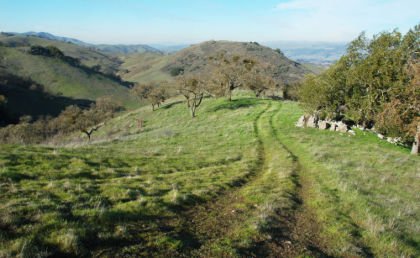Shani Kleinhaus and Mike Ferreira
Guest Columnists
What should the City of Gilroy look like in 2040? Should it sprawl over thousands of additional acres of farmland? Or should growth be compact and transit oriented?
This future is being considered now, as Gilroy is developing the “Gilroy 2040 General Plan” to guide the City’s growth patterns for the two decades ahead. Already, a lot of work has been done resulting in the release of a report that presents three alternatives. All the three would convert agricultural land to urban use: the first retains the existing General Plan boundaries and would allow the development of 1645 acres of agricultural land; the second “Orderly Growth” alternative would allow expansion of the current urban footprint by 2077 acres; and the third “Compact Growth” alternative would reduce the currently allowed development, but allow the development of 230 acres.
All three alternatives allow development in oak woodlands, riparian and other sensitive habitats that lie within the city limits. All three have build-out capacity for housing, population growth, and jobs that exceed all but the highest projections for Gilroy by 2040. The General Plan Advisory Committee (GPAC) has recommended that the City proceed with the most ambitious and sprawling alternative (“Orderly growth”) for many of the Plans focus areas.
But do residents aspire to a sprawling and congested metropolis as they think of Gilroy’s future? Based on sentiments expressed by participants of a February Gilroy community workshop and on responses to an on-line survey – the answer is– NO.
Instead, the community clearly respects open space and the rural surroundings of Gilroy, and assigns a high priority to the conservation of these resources. The Loma Prieta Chapter of the Sierra Club and Santa Clara Valley Audubon Society recently sent a joint letter to the Gilroy Planning Department, Planning Commission, and City Council, urging the city to curtail sprawl and to preserve sensitive habitats.
In our letter, we asked Gilroy planners and decision makers to prioritize quality of life for residents and the ecological health of the community and its surroundings. Growth should be efficient – vertical rather than horizontal – and development should be transit-oriented to minimize greenhouse gas emissions. Lands outside Gilroy’s current footprint should be valued as an ecological resource, and urban development in native habitats and agricultural lands should be avoided.
We duly note that we owe the Gilroy Dispatch an apology for one of our comments in our letter. We erroneously stated that the Dispatch had not covered the workshop and on-line survey results. To the contrary, an article by David Lima (April 3) discussed these and highlighted deficiencies associated with the GPAC’s support for the highest development alternative in most of the focus areas where open space is at jeopardy.
We know that residents of Gilroy and southern Santa Clara County depend on the Dispatch for information about local issues. We are pleased to see that this tradition continues, and look forward to future articles that will help readers engage as decisions are made about the future of the community.
Shani Kleinhaus is the Environmental Advocate for Santa Clara Valley Audubon Society. Mike Ferreira is the Conservation Committee chair of the Sierra Club Loma Prieta Chapter and serves on the Executive Committee of the chapter. They wrote this piece for the Dispatch.














